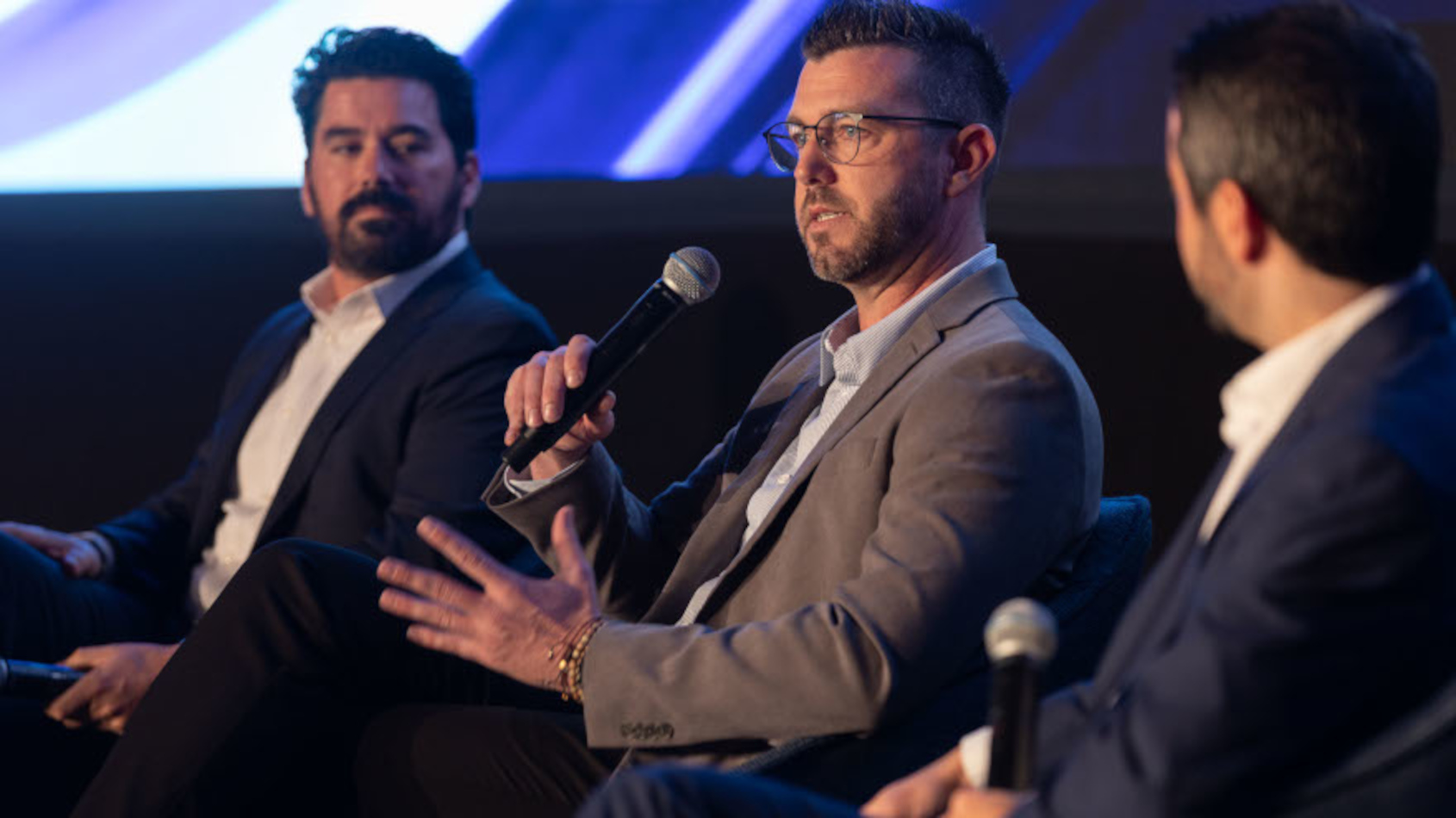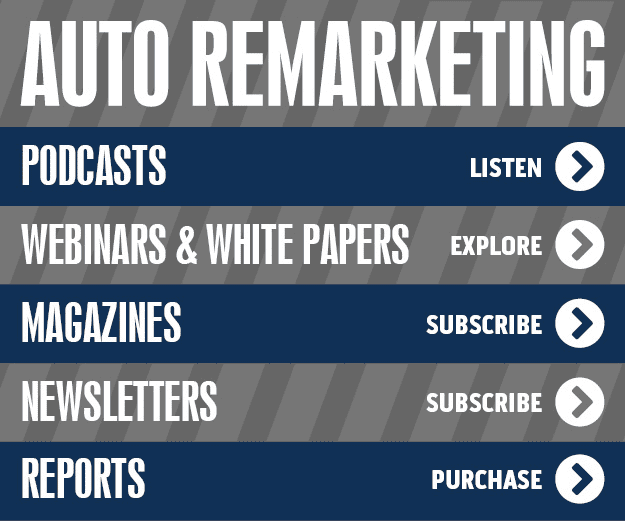COMMENTARY: The real cost of holding aged inventory

Jon Karasek of Mach10 Automotive answers a question during Used Car Week 2024 in Scottsdale, Ariz. Photo by Jonathan Fredin.
By subscribing, you agree to receive communications from Auto Remarketing and our partners in accordance with our Privacy Policy. We may share your information with select partners and sponsors who may contact you about their products and services. You may unsubscribe at any time.
In automotive retail, time is one of the most overlooked cost drivers. A car sitting too long on your lot does more than just take up space. It weakens your margins, strains your working capital, and reduces buyer confidence. Aged inventory is not a minor operational issue. It is a strategic liability.
For dealerships looking to protect profitability and valuation, understanding the full cost of aging units is not optional. It is essential.
What qualifies as aged inventory?
Most high-performing dealers aim to turn inventory at least 12 to 16 times per year. That means every unit should ideally sell within 30 days. Once a car crosses 45 to 60 days, it enters the aged zone. At that point, the hidden costs begin compounding, often without immediate visibility in your gross reports.
Currently new-car franchise dealers’ day-supply is nearing 80 days. That equates to 4.5 turns, annualized. The recent sales slowdown has a significant financial impact on dealerships. Especially flooring costs are way too high, in general. Even worse, the dealer is forced to pay for the car in full once it can no longer remain on the bank’s flooring plan.
Some of those costs are obvious. Others are silent killers that impact dealers’ long-term business health.
If vehicles are starting to age, what justification are you telling yourself to avoid aggressively working to liquidate them before they begin costing your operation more money? Are you training your team to hold out for the “golden ticket” buyer, or are you instilling the discipline to operate efficiently?
Subscribe to Auto Remarketing to stay informed and stay ahead.
By subscribing, you agree to receive communications from Auto Remarketing and our partners in accordance with our Privacy Policy. We may share your information with select partners and sponsors who may contact you about their products and services. You may unsubscribe at any time.
Decreases in inventory value add to margin erosion
Wholesale car prices have generally been in decline year-over-year since late 2023 or early 2024, with figures showing a total decline of 2.9% to 4.0% compared to the prior year in the first half of 2025, followed by a rebound to a 2.9% increase by July 2025, according to the Manheim Used Vehicle Value Index (MUVVI). However, these year-over-year numbers can be volatile, with significant month-over-month fluctuations caused by factors such as tariffs, new model year releases, and inventory levels, creating a more complex picture than simple, consistent year-over-year declines.
As a unit ages, it loses market value. Depreciation does not wait for strategy meetings. It happens every day. Add to that the cost of floorplan interest, price reductions, and eventual incentives, and a vehicle that once had a strong front-end margin is now dragging down your average.
Don’t get caught up in the old saying “one in the hand is worth two in the bush.” We’re never upset when a vehicle sells quickly for a decent profit, but we always complain when it doesn’t sell, ages up, and becomes a liability.
Even small delays in reconditioning or pricing reviews can exacerbate the problem and result in thousands of dollars lost per unit over a quarter.
Cash flow suffers when stock lingers
Inventory is capital. When it is tied up, it impacts your ability to reinvest. Aged stock ties up working capital that could otherwise be used for acquiring better units, improving service capacity, or hiring new talent.
It also complicates forecasting. When too many units go stale, it becomes harder to predict sales velocity, margin performance, or even staffing requirements. You are not just losing money. You are losing clarity.
Think, too, about the impact on your dealership when on-brand inventory ages to the point where depreciation outruns the retail opportunity. If those units are eventually wholesaled outside the organization, you don’t just lose front-end margin – you also lose the lifetime service and parts business tied to those customers.
Aged inventory affects people, not just numbers
Sales teams often lose motivation when they are forced to push slow-moving vehicles. It creates tension between what customers want and what managers need to move. That dynamic leads to longer deal times, deeper discounts, and lower team morale.
Your reputation takes a hit, too. Online shoppers notice when the same vehicles appear in listings for months. They start to assume something is wrong with the unit or the dealership. The result is lower engagement and a weaker negotiating position.
Even loyal customers may hesitate if they see your lot full of unchanging inventory. It signals inefficiency, poor decision-making, or worse, desperation.
It becomes a problem in valuation
If you are thinking about a future sale or investment round, aged inventory can quickly impact your dealership’s valuation. Informed buyers do not just look at the number of vehicles. They look at how fast those vehicles move and how effective your pricing and reconditioning processes are.
A store with high aging percentages may face valuation deductions, especially if there is no clear plan to resolve it. In some cases, buyers may request aged units be cleared before closing, forcing fire-sale conditions.
Operational inefficiencies become due diligence flags. And aged inventory is one of the easiest ways for those flags to surface.
What the best operators do differently
High performers treat inventory turnover as a controllable input, not an outcome. They recondition vehicles in under three days. They reprice vehicles every seven to ten days. They monitor market trends daily, not weekly.
They also set internal goals to retail more than 55 percent of inventory within 30 days. This keeps floor plan costs low and margin performance strong. It also signals to customers and buyers that the dealership has operational discipline and market awareness.
Aged inventory is not inevitable. It is manageable with the right systems, training, and performance tracking in place.
Make inventory a competitive advantage
Inventory efficiency is not just about cash flow or margins. It reflects leadership. It shows how well a dealership understands its market, manages its teams, and prepares for growth or exit.
Dealers who want to compete in today’s market must build systems that prevent inventory aging from becoming a liability. That means reviewing turn rates continuously, training staff on aging triggers, and using real-time dashboards to flag issues early.
If inventory is sitting longer than it should, your business is paying for it – whether you see it or not. It is time to make that cost visible, manageable, and avoidable.
For strategic advisory on inventory efficiency and operational improvement, contact Mach10 at https://mach10automotive.com/contact-us/.
Jon Karasek is vice president of innovation at Mach10 Automotive. Having recently held the position of Regional Director of Digital Strategy and Innovation for one of the industry’s largest independent auto auction group, Jon’s skills range from mechanical/technical certifications to wholesale and retail sales. Jon was recognized for leadership accomplishments when honored with the 2021 Auto Remarketing 40 Under 40 Award. He is an accomplished auctioneer with over 20 years of experience in the automotive industry. Jon graduated from the Worldwide College of Auctioneering and then excelled as the GM of one of Southern California’s premier wholesale auto auctions.


